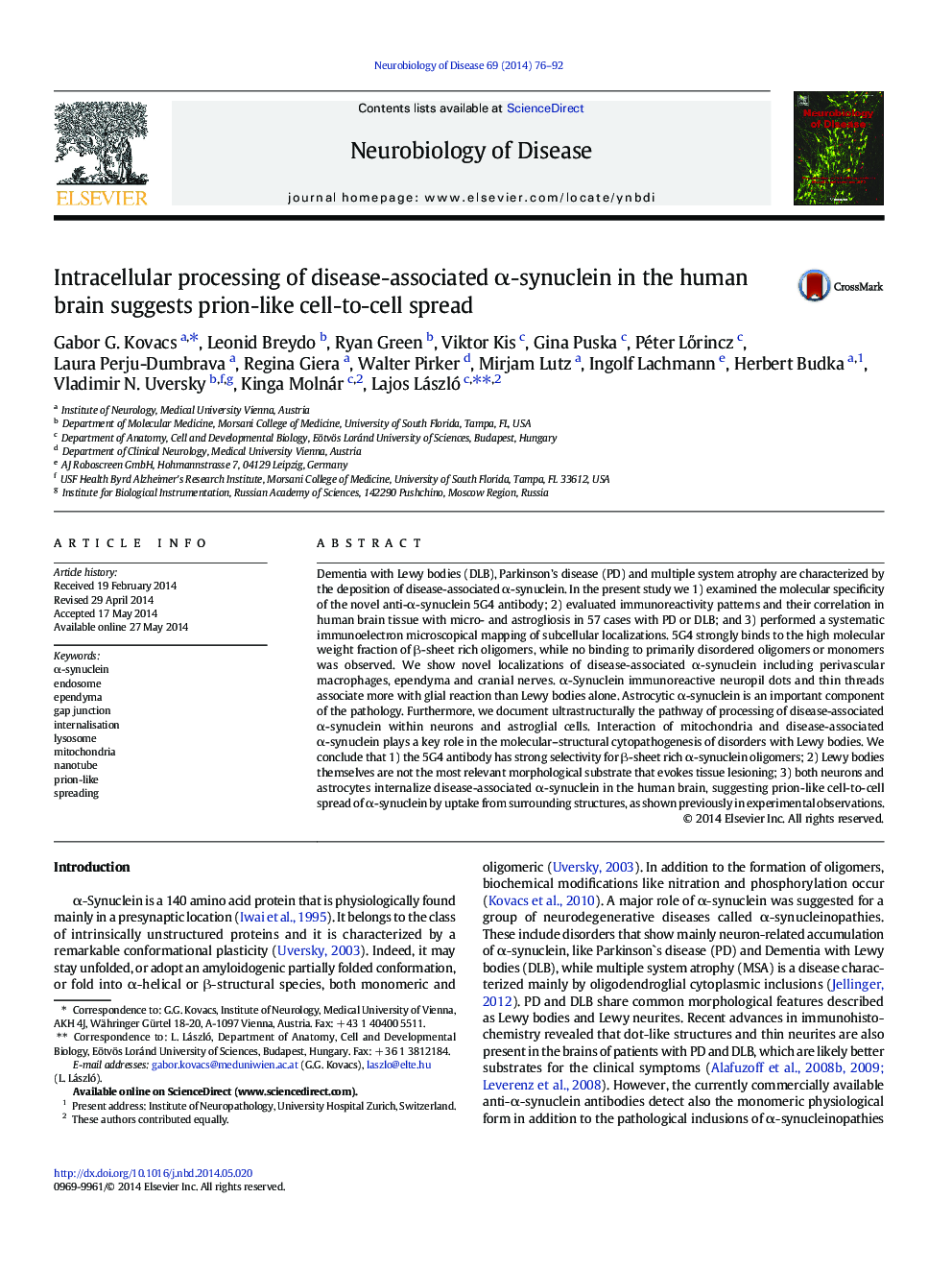| Article ID | Journal | Published Year | Pages | File Type |
|---|---|---|---|---|
| 6021919 | Neurobiology of Disease | 2014 | 17 Pages |
Abstract
Dementia with Lewy bodies (DLB), Parkinson's disease (PD) and multiple system atrophy are characterized by the deposition of disease-associated α-synuclein. In the present study we 1) examined the molecular specificity of the novel anti-α-synuclein 5G4 antibody; 2) evaluated immunoreactivity patterns and their correlation in human brain tissue with micro- and astrogliosis in 57 cases with PD or DLB; and 3) performed a systematic immunoelectron microscopical mapping of subcellular localizations. 5G4 strongly binds to the high molecular weight fraction of β-sheet rich oligomers, while no binding to primarily disordered oligomers or monomers was observed. We show novel localizations of disease-associated α-synuclein including perivascular macrophages, ependyma and cranial nerves. α-Synuclein immunoreactive neuropil dots and thin threads associate more with glial reaction than Lewy bodies alone. Astrocytic α-synuclein is an important component of the pathology. Furthermore, we document ultrastructurally the pathway of processing of disease-associated α-synuclein within neurons and astroglial cells. Interaction of mitochondria and disease-associated α-synuclein plays a key role in the molecular-structural cytopathogenesis of disorders with Lewy bodies. We conclude that 1) the 5G4 antibody has strong selectivity for β-sheet rich α-synuclein oligomers; 2) Lewy bodies themselves are not the most relevant morphological substrate that evokes tissue lesioning; 3) both neurons and astrocytes internalize disease-associated α-synuclein in the human brain, suggesting prion-like cell-to-cell spread of α-synuclein by uptake from surrounding structures, as shown previously in experimental observations.
Keywords
Related Topics
Life Sciences
Neuroscience
Neurology
Authors
Gabor G. Kovacs, Leonid Breydo, Ryan Green, Viktor Kis, Gina Puska, Péter LÅrincz, Laura Perju-Dumbrava, Regina Giera, Walter Pirker, Mirjam Lutz, Ingolf Lachmann, Herbert Budka, Vladimir N. Uversky, Kinga Molnár, Lajos László,
